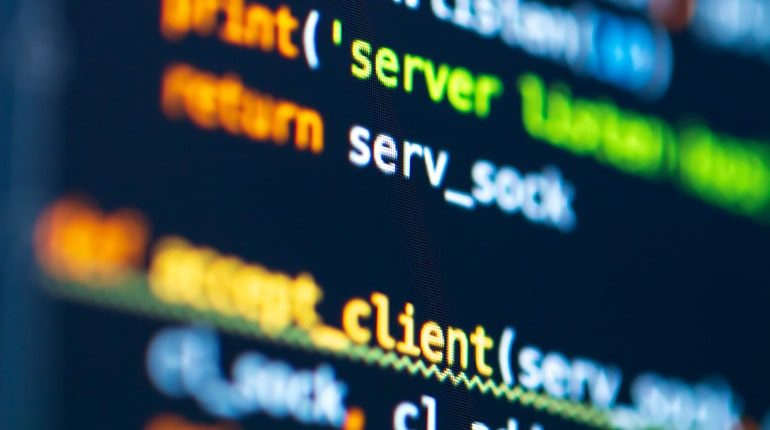Even for seasoned professionals, deciding on a predetermined testing strategy for agile projects can be challenging, given Python’s increasing use in machine learning and data science. Given that Robot uses a keyword-driven approach that makes it user-friendly and Pytest is simple to manage for ongoing changes, it makes sense that these frameworks continue to gain the most popularity. Robots are more user-friendly as a result of both of these characteristics.
The Robot framework can be viewed as a template for test automation that can be used to automate situations through keyword-driven approaches. This design could be a test automation template. The use of the keyword-driven strategy facilitates the job of writing test cases.
To use the predefined keywords, the user must install the required libraries—both the default and the custom ones. Because of this, the code is easy to understand in addition to being easy to peruse. It allows users to use languages like Python and Java while enabling the automation of complex situations.
The Pytest framework, however, was created especially for unit testing and simplified the entire process. Built-in tags like “fixtures” and “parameterize” help prevent repetitive code and make it more maintainable, but they sacrifice readability. Pytest is a handy tool to have on hand when it comes to unit testing situations where the test code block stays nearly identical while the inputs change.
Pytest Framework
To start with Pytest, let’s know about Python first:
Python is a flexible and dynamic language, so most applications are developed with the help of Python. If checked from a tester’s perspective, Python has a lot of ready-made libraries and modules which allow the creation of scripts. Python is said to offer full-fledged testing solutions for all projects. It can also perform system, functional, unit, and, more importantly, BDD testing.
Pytest is a testing framework that helps users finish the test code based on the Python programming language. The Pytest framework allows users to write scalable and simple test cases for the UI, databases, and APIs. Pytest is majorly used for creating tests for many APIs. It helps develop tests, ranging from simple to complicated functional tests.
Pytest is the best among all of the Python frameworks. It provides the best solution for acceptance, unit, and functional testing. Because of its many attractive features, it is famous among Python frameworks.
Here are some of its outstanding features:
• It offers more than 200 external plugins to support various types of functional testing.
• Pytest also offers readymade test designs without any boilerplate.
• It never requires any other procedure for assertions like assertTrue, assertEquals, etc.
• All tests are parametrized, ensuring there is no code duplication.
Robot Framework
The Robot framework is an open-source framework primarily used with automation and other programming languages. The group that supports Robot Framework is called the Robot Framework Foundation. Many top companies use the Robot framework for developing their software.
The robot framework is quite extensible. It can be synchronized virtually with other tools for developing robust automated solutions. The Robot framework can be used free of cost, and no licensing fees are attached to it.
The Robot framework comes with the easiest syntax, composed of human-readable keywords. Its functionalities are extended by libraries that can be implemented with Java, Python, and other programming languages. It also has a flexible ecosystem consisting of tools and libraries, described further in the article.
There is a public version of Robot Framework that can be expanded. Virtually any other tool can be integrated with Robot Framework to create highly effective and flexible automation solutions. Robot Framework is not subject to any licensing costs when used.
An all-inclusive tool for test automation called The Robot Framework was created on top of the Python computer language and included a variety of open-source tools. The syntax provided by Robot can be used to write test programs. By way of its structure, keywords, and flow collection, it offers something similar to the programming language. The most popular library that is combined with the Robot framework is Selenium.
The Robot framework is comprised of two parts:
1. Libraries
By default, the framework comes with a pre-configured collection of built-in elements. When running test cases, these tools are a tremendous help to developers. By incorporating structures created by outside parties, it is possible to keep its modularity while allowing for expanding those capabilities.
Libraries are pre-installed for dealing with dates, XML, and times, taking screenshots, and manipulation strings. However, additional libraries, such as support for Django, Android, and HTTP, can be added depending on the requirements and use cases.
2. Tools
Tools are made to make tasks more accessible, including using and keeping test cases. There are built-in tools for documenting, capturing, and generating HTML-based reports and editing tools like Eclipse IDE plugins. Both the frameworks and the tools must be used when creating scalable automation test scenarios with the Robot Framework.
Pytest v/s Robot Framework: which one to choose
Two popular options when searching for an automation testing framework are Robot and Pytest. The Robot is a versatile automation system that can be used for functional and acceptance testing and acceptance test-driven development (ATDD). Pytest is a Python testing tool that has developed into a fully functional version and can assist users in writing improved programs for Python-based applications.
The following are some of the considerations that should be made when deciding between Pytest and Robot as an automation framework:
1. Pricing
Programming languages Pytest and Robot are both open-source and cost nothing to use. You can contact their official websites for documentation and access to the frameworks.
2. Support for Automation
To meet the needs of any automation job, Pytest and Robot both support a wide range of automation, including functional, UI, and test automation and CI integration (Jenkins). Through its Robot corder plugin, Robot also provides a capture-and-play feature and creates an automated UI script. Pytest does not support this feature.
3. Logging/Reporting
Robot, the all-purpose test automation platform, has many built-in reporting and logging features. It provides very clean and presentable results and various charts and supports both HTML and XML file formats. Users will need to install extra plugins to complete the task because Pytest does not come with completely functional reporting capabilities built right in.
4. Support for Programming Languages
The Robot is better if your application needs to handle multiple programming languages. Robot framework can be used with various programming languages, whereas Pytest is only compatible with Python-based applications. The Robot is also not reliant on any particular operating system or application.
5. Maintainability
When compared to Robot, Pytest is generally viewed as having better maintainability. However, a mixed Robot and Python approach can also create an efficient automation system. The Robot would be used for user-friendly test scripts, while Python would be used for the back-end library methods. It would be advantageous to combine Python and Robot if the members of your automation team have a range of skill sets.
6. Skills
It is easy to start with Robot, even if you are fresh to automation and have only rudimentary developer skills compared to Pytest, necessitating a thorough understanding of Python programming. Robot offers a robust ecosystem of built-in tools and a straightforward, keyword-driven approach.
7. Test Execution
Several features are supported by Pytest and Robot, including the ability to execute individual test cases, test cases with tags like fvt and smoke, and exclude particular test cases from runs. Rerun failed test cases in a suite.
Let’s first understand the main difference between Pytest and Robot:
• The Robot Framework helps organize test data because it can compose and arrange test cases practically and effectively. Contrarily, Pytest provides a time-saving method for combining related test cases into a single test process, and variables can be passed by utilizing fixtures.
• If we look at how easy it is to maintain the code, Pytest will be selected over Robot. This is because the Pytest file contains all the fixtures, removing the need to configure each program manually.
• When using Pytest, the time it takes to test cases is reduced by 30 and 40% compared to the Robot Framework.
• Robot Framework provides HTML reports, but Pytest does not; you must acquire and install a plugin to use Pytest and get a full report.
The developers can also look for web platforms like LambdaTest to help them with testing. LambdaTest is a cloud-based testing solution allowing testers and developers to test their applications on over 3000+ operating systems and browsers.
Conclusion
If you are a fresher and need to gain experience in automation, look for a Robot framework as it is easy to use. Its built-in libraries and keyword approach will simplify the process for a newcomer. And if you are an experienced person looking forward to building complicated automation, then Pytest is the answer, as it comes with IDE support, static code assistance, etc. The above article will also help you make the right choice, as the differences are described in detail.



